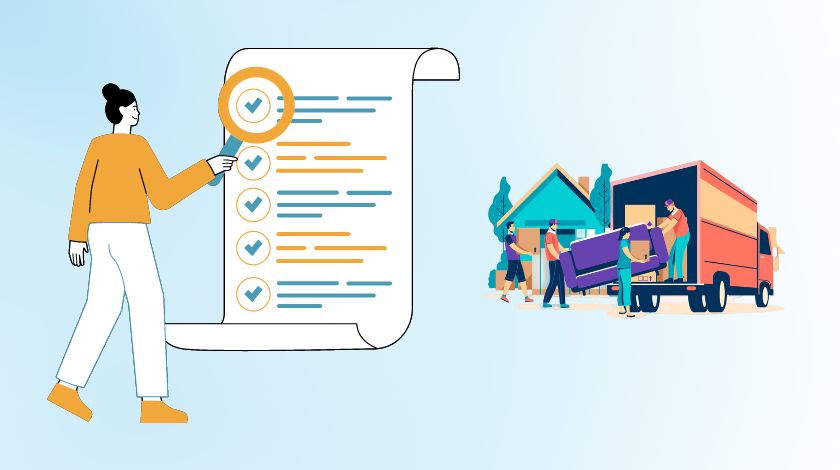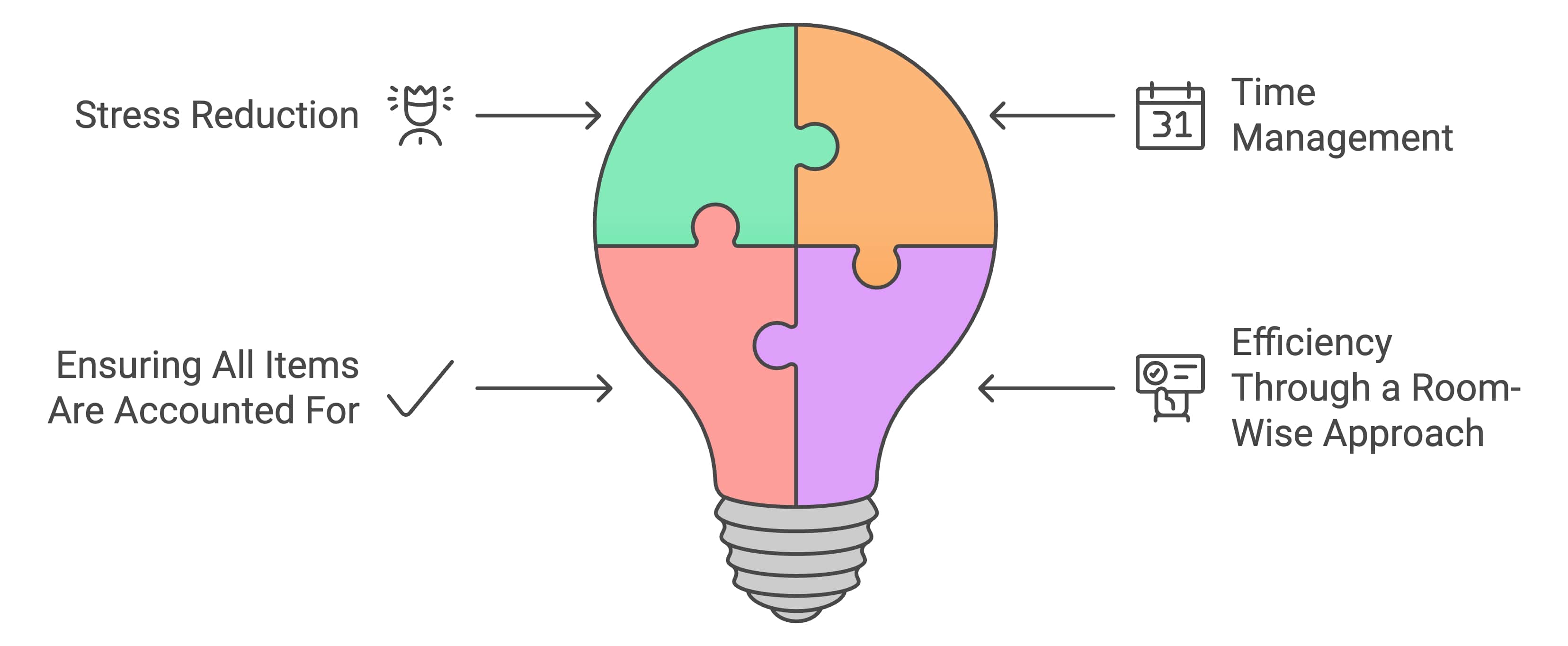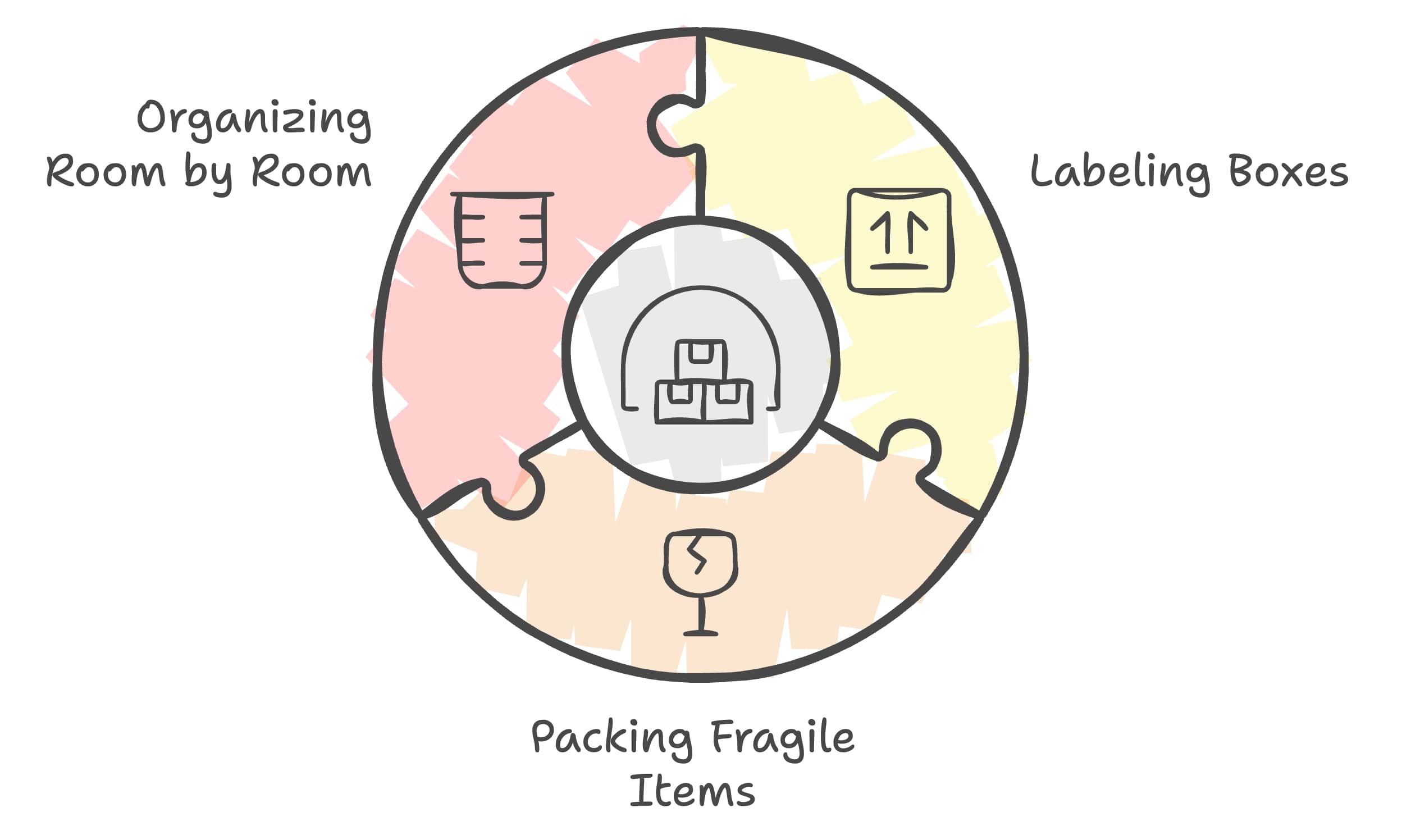Room-by-Room Household Items Checklist For a Smooth Relocation

One of the most effective ways to tackle the moving process is by breaking it down room by room. This room-wise approach simplifies the packing process, allowing you to focus on one area at a time and significantly reducing the chances of leaving anything behind. By categorizing your belongings by room, you can also make unpacking in your new home more efficient, as boxes will be organized and ready to go exactly where they belong. Whether you’re moving across town or across the country, having a structured checklist that guides you through each room is essential to making your relocation as seamless as possible.
Listen to our podcast on Room-by-Room Household Items Checklist For a Smooth Relocation
Looking for home shifting? Hire verified movers with AssureShift
Why Do You Need a Household Items Checklist?

A household items checklist is essential for reducing stress, managing your time effectively, and ensuring that every item reaches your new home safely. A room-by-room approach further enhances the efficiency and organization of your move.
1. Stress Reduction
Moving is a major life event that can be incredibly stressful. A well-organized Items checklist along with moving day checklist helps alleviate that stress by providing a clear roadmap of tasks to complete. By having every item and task listed, you can systematically work through the process, reducing the feeling of being exhausted.
2. Time Management
A checklist allows you to plan your packing schedule efficiently, ensuring that you allocate enough time for each room and task. It helps you avoid last-minute chaos by keeping you on track and focused on what needs to be done.
3. Ensuring All Items Are Accounted For
With so many things to remember, it’s easy to overlook important items during a move. A checklist ensures that nothing is forgotten or left behind. By checking off items as you pack them, you can have peace of mind knowing that everything is accounted for.
4. Efficiency Through a Room-Wise Approach
Breaking down the packing process by room makes it more manageable and organized. You can focus on one area at a time, making the task seamless. A room-wise checklist also makes unpacking easier, as boxes will be organized by room, allowing you to set up your new home more efficiently.
Room-Wise Household Items List for Shifting
This room-wise packing strategy ensures that every item in your home is accounted for and securely packed, making your move as smooth and efficient as possible.
Living Room
- Furniture: When packing your living room, start with the larger furniture items like sofas, coffee tables, TV units, and shelves. These items should be disassembled if possible to save space and ensure safety during transport.
- Electronics: Securely pack all electronics, including the television, speakers, and gaming consoles. Use original boxes if available, or wrap them carefully in bubble wrap to prevent damage.
- Décor: Don’t forget about your decorative items such as lamps, paintings, rugs, and cushions. These should be packed in separate boxes to avoid damage.
- Miscellaneous: Gather all smaller items like books, magazines, remotes, and plants. Pack them in labeled boxes to ensure easy unpacking.
Bedroom
- Furniture: Disassemble large bedroom furniture like beds, side tables, wardrobes, and dressers. Keep screws and small parts in labeled bags to avoid losing them.
- Bedding: Pack mattresses, pillows, sheets, and blankets in protective covers to keep them clean and ready to use in your new home.
- Personal Items: Carefully pack personal items such as clothes, jewelry, and personal gadgets in organized boxes. Consider using wardrobe boxes for hanging clothes to keep them wrinkle-free.
- Miscellaneous: Don’t forget the small yet important items like alarm clocks, bedside lamps, and mirrors. These should be wrapped securely to prevent any breakage.
Kitchen
- Appliances: Start with packing large appliances like the refrigerator, microwave, oven, and mixer-grinder. Ensure they are clean and dry before packing.
- Cookware: Gather all pots, pans, and utensils. Wrap fragile items in bubble wrap or packing paper and stack them carefully in boxes.
- Dinnerware: Plates, glasses, cutlery, and serving bowls should be packed with extra care to avoid breakage. Use dish boxes with dividers if available.
- Pantry Items: Pack spices, grains, oils, and canned goods in sturdy boxes. Ensure all containers are sealed tightly to prevent spills.
- Miscellaneous: Don’t overlook cleaning supplies and storage containers. Pack them separately and label the boxes clearly.
Bathroom
- Toiletries: Pack soap, shampoo, toothpaste, razors, and other toiletries in leak-proof bags or containers to avoid any spills during the move.
- Towels and Linens: Gather all bath towels, hand towels, and washcloths. These can be packed in large boxes or bags.
- Cleaning Supplies: Toilets, disinfectants, scrubbers, and other cleaning supplies should be packed securely to prevent leaks or spills.
- Miscellaneous: Don’t forget to pack shower curtains, bathroom mats, and mirrors. Wrap mirrors in protective materials to prevent them from breaking.
Dining Room
- Furniture: Disassemble dining tables and chairs if possible, and pack them securely. Cabinets should be emptied and packed separately.
- Tableware: Carefully pack plates, glasses, cutlery, and napkins. Use protective padding to avoid any damage during the move.
- Décor: Items like centerpieces, placemats, and tablecloths should be packed separately to keep them in good condition.
Tips for Efficient Packing
By following these tips, you can make the packing process more efficient and organized, minimizing stress and ensuring a smoother move to your new home.

1. Labeling Boxes
Proper labeling is key to staying organized during a move. As you pack, label each box with its contents and the room it belongs to. This will save you time when unpacking, as you’ll know exactly where each box should go. Make sure the labels are clear and placed on multiple sides of the box for easy visibility, even when boxes are stacked.
2. Packing Fragile Items
Fragile items require special attention to ensure they arrive at your new home intact. Use plenty of padding, such as bubble wrap, packing paper, or even towels, to cushion delicate items like glassware, ceramics, and electronics. Clearly mark these boxes as “FRAGILE” and indicate which side should be kept up during transport to prevent mishandling.
3. Organizing Room by Room
A room-by-room approach to packing can greatly simplify the moving process. Focus on one room at a time, packing items in a logical order—starting with less frequently used items and ending with everyday essentials. This method not only helps keep your packing organized but also makes unpacking in your new home much easier, as you can tackle one room at a time without mixing up items from different areas.
Ready, Set, Move: Your Checklist to a Stress-Free Relocation
A comprehensive household items checklist is your ultimate tool for ensuring a smooth and stress-free move. By meticulously organizing and categorizing your belongings, you can avoid the chaos that often accompanies moving and ensure that every item is accounted for. This checklist not only helps you stay on track but also makes the entire process—from packing to unpacking—far more efficient.
Remember, every household is unique, and so are the items you’ll need to move. Customize your checklist to suit your specific needs, whether you’re moving into a smaller space, relocating long-distance, or dealing with fragile valuables. The earlier you start planning and organizing, the easier and more manageable your move will be.











